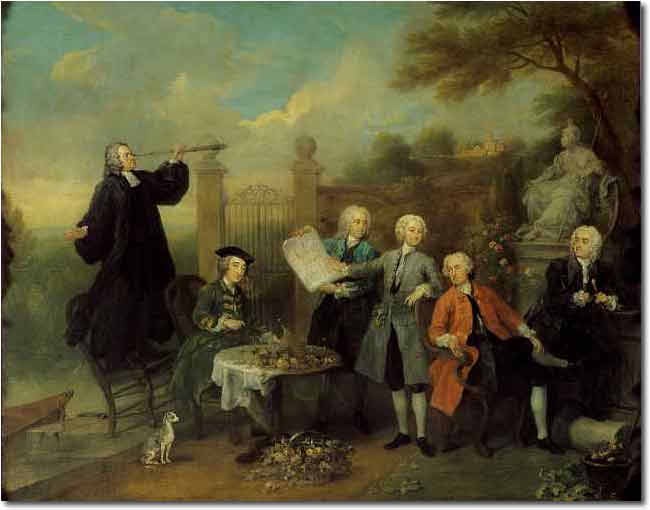The noble houses of eighteenth-century England. By 1750 the Western world had captured a vast commerce unequaled in human history. The riches derived from it, enabled men of property, the merchant class, to live in a sophisticated luxury previously enjoyed only by royalty….

—Artist
Jan Siberechts (1627‑c.1700)
Title
View of a House and its Estate in Belsize, Middlesex
Date
1696
Medium
Oil paint on canvas
Dimensions
unconfirmed: 1079 x 1397 mm
Collection
Tate—Read More:http://www.tate.org.uk/art/artworks/siberechts-view-of-a-house-and-its-estate-in-belsize-middlesex-t06996
Venice led the way. Safe within its lagoon, it knew neither feudal aristocracy nor the fortified dwelling, and its most ancient palaces, open to the sun and sky and built for comfort and not security, were an augury of the future. Wealth for Italy followed quickly; its tiny city-states bred a jealous competitive rivalry; the monuments of its ancient glory spurred ambition; finally, the contraction of economic opportunity due to the failure of Byzantium stopped up new outlets for investment and permitted an extravagant self-indulgence in competitive living. The fifteenth and early sixteenth centuries witnesses an astounding efflorescence of architecture, painting, sculpture, indeed of all the arts and crafts that adorn the life of the individual. It was curious blend of noble and bourgeois which combined grandeur with comfort, display with domesticity; aristocratic extravagance gave a panache to the delights of middle-class existence.

The planning of a great estate was a passionate interest of many English aristocrats. This picure, Lord Hervey and his Friends, painted by Hogarth around 1736, shows the master of Ickworth in Suffolk displaying the design for an ornamental temple. Image:http://www.thecultureconcept.com/circle/age-of-elegance-health-wealth-wit-and-society
Above all, it created new standards of architecture for all who could afford to build in the grand manner. The baths and villas of Imperial Rome provided models for a series of brilliant architects from Brunelleschi, through Michelangelo, to Palladio, whose I Quattre Libri dell’ Architectura most strongly influenced the aristocracy of eighteenth-century England.
In the series of splendid villas that Palladio built about Vicenza and Venice, he achieved a combination of proportion, magnificence, and brilliant decoration of incomparable quality. These and the palaces of Rome, Florence, Venice, Genoa, and Milan, set a new standard for luxurious living hitherto unknown in Europe. The fashion quickly spread- indeed much more quickly than the technical knowledge or skill in craftsmanship- and great palaces, often overblown and barbarous in concept, were built in northern and western Europe long before a detailed knowledge of the new architecture had been assimilated.

—Description:A View of Bayhall, Pembury, Kent, c.1675 (oil on canvas) by Siberechts, Jan (1627-1703) info.: burnt down in 1960—Read More:http://fineartamerica.com/featured/a-view-of-bayhall–pembury-jan-siberechts.html
Some of these great houses, modified and purified by later generations, still exist; a few which responded, as it were, to the distant echoes of the new style captured a sense of proportion that adds distinction to their barbaric charm. Of these the great English Tudor houses of Hardwick Hall, Longleat, and Burghley are the most famous.





 COMMENTS
COMMENTS